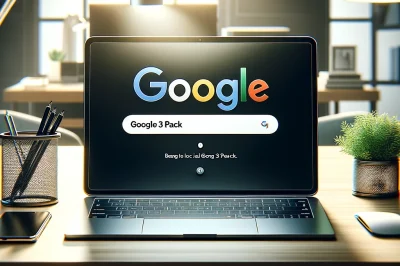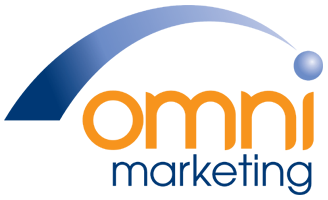Table of Contents

Article-at-a-Glance
- Google Local Pack is a powerful tool for boosting local business visibility online.
- Creating and optimizing a Google My Business profile is essential for Local Pack success.
- Accuracy in business details and customer reviews significantly influence Local Pack rankings.
- Local SEO strategies, including keyword optimization and backlinks, are key to improving rankings.
- Regular monitoring and updating of your business profile based on performance data is crucial.
Unlocking the Potential of Google Local Pack for UK Businesses
Imagine a bustling street in London filled with eager shoppers. Now picture your business popping up on their smartphones as they search for the best places nearby. That’s the power of Google Local Pack. It’s the virtual equivalent of a prime storefront on the busiest street. And it’s not just for big players; small businesses can dominate this space too.
Why Google Local Pack is a Game-Changer for Local Sales
First off, let’s talk about visibility. When folks search for a local service or product, the Local Pack showcases businesses like yours front and centre. It’s like getting the best spot in the window of a shopping arcade—everyone sees you first.
But there’s more. The Local Pack isn’t just about being seen. It’s about building trust. With reviews and ratings displayed right there, potential customers get an instant feel for your business. It’s like having a crowd of satisfied customers cheering you on, right when a passerby is deciding where to go.
Most importantly, the Local Pack drives action. It doesn’t just say, “Here we are!” It says, “Come on in!” with features like easy-to-use directions and click-to-call functionality.
Understanding the Local Pack’s Role in Consumer Decisions
Think about how you choose where to eat or shop. You want quick, reliable options, right? That’s what the Local Packgives to consumers. It serves up the best choices based on what’s nearby and what’s good. And because it’s Google, people trust it. It’s like getting a recommendation from a savvy local friend.
For example, when Jane searches for “bookstores in Manchester,” the Local Pack won’t just show her a list. It’ll highlight the top spots, with user ratings and how far they are from her. If your bookstore has a 4.9-star rating and is just around the corner, Jane is likely to visit you.
The Power of Google My Business in Local Pack Rankings
Now, let’s get down to business—literally. Your Google My Business (GMB) profile is your golden ticket to the Local Pack. It’s like your business’s ID card for Google. The better it looks, the more likely you are to get into the exclusive Local Pack club.
Setting Up Your Google My Business Profile
First things first, you need a GMB profile. It’s free and easy to set up. Just head over to the Google My Business website and follow the steps. Think of it as setting up a social media profile for your business. You’ll enter your name, address, hours, and all the essential details that customers need.
But don’t just fill in the blanks and call it a day. You need to make sure every piece of information is spot-on and accurate. A typo in your address or a wrong phone number can be the difference between a new customer and a missed opportunity.
Key Elements That Boost Profile Performance
Here’s where you can shine. Your GMB profile needs to be as complete and engaging as possible. That means:
- Photos: Upload high-quality images of your business. Show off your products, your team, and your premises. People eat with their eyes online, too!
- Descriptions: Write a compelling description that includes local keywords. If you’re a florist in Bristol, make sure you mention “Bristol flowers” or “floral arrangements in Bristol.”
- Categories: Choose the right business category. It helps Google understand exactly what you offer and match you with the right searches.
- Attributes: Add any special features your business has, like free Wi-Fi or wheelchair accessibility.
- Posts: Use GMB posts to share updates, offers, and events. It’s like a mini-advertisement that Google gives you for free.
Remember, your GMB profile is a living thing. Keep it updated with fresh content and respond to reviews—yes, even the not-so-great ones. It shows you’re attentive and care about customer feedback.
Optimising Your Presence on Google Maps
Let’s dive into Google Maps. This is where the rubber meets the road, literally. Your business popping up on Google Maps is like having a billboard on the Information Superhighway. But, it’s not just about being there; it’s about being easy to find and get to.
Ensuring Accuracy of Location and Hours
Accuracy is king. If your business details on Google Maps are wrong, it’s like sending customers to a treasure hunt without a map. So double-check your address, pin location, and opening hours. If you’re open late on Thursdays or have a new phone number, update it immediately. Consistency across the web is also crucial. Make sure your details are the same everywhere online—on your website, social media, and directory listings.
Leveraging the Importance of Customer Reviews
Customer reviews are your business’s report card, and everyone can see it. Positive reviews can be the deciding factor for someone choosing between you and your competitor. Encourage your customers to leave a review after a purchase or a visit. Make it easy for them—send a follow-up email with a direct link to your Google Maps listing.
But what about bad reviews? Don’t panic. Respond to them professionally and with a genuine offer to resolve the issue. This isn’t just damage control; it’s an opportunity to show potential customers that you care and are proactive about customer satisfaction.
And remember, the more reviews you have, the more data Google has to work with. This can help improve your visibility in search results. It’s a win-win!
- Respond to all reviews, good or bad, to show you value customer feedback.
- Use negative reviews as a chance to improve and showcase your customer service.
- Regularly ask happy customers to share their experiences online.
Local SEO Strategies That Elevate Your Ranking
Local SEO is about more than just your Google My Business profile. It’s about making your business the most relevant and authoritative option for local searchers. And it starts with content—content that’s tailored for your local audience.
Think about the local lingo, the landmarks, and the community events. Mention these in your blog posts, your social media updates, and your website copy. It’s like giving a nod to your neighbours, showing them you’re one of them and you understand their needs.
Utilizing Local Keywords for Maximum Impact
Keywords are the signposts that guide users to your content. But not just any keywords—local keywords. These are the terms that someone in your area will use when they’re searching for the services or products you offer. For instance, ‘best coffee in Edinburgh’ or ‘Birmingham tax advisor’. Research these terms, understand how often they’re searched for, and sprinkle them throughout your online presence.
Building Local Backlinks to Increase Authority
Backlinks are like votes of confidence from other websites. And in the world of SEO, a local backlink is a vote from your community. Get involved in local events and sponsorships, or partner with other local businesses for cross-promotions. Each of these connections can lead to a backlink, and every backlink tells Google you’re a trusted member of the local business scene.
Here’s a tip: don’t forget about local press. A mention in a local news article or a community blog can be a powerful backlink. It’s like being recommended by the local newspaper.
| Strategy | Benefits |
|---|---|
| Claim and optimize your Google Business Profile | Ensures your business information is accurate and up-to-date on the most important local search platform |
| Provide complete and accurate business details | Include your name, address, phone number, hours of operation, categories, and other key details to improve relevance |
| Leverage location-based keywords | Incorporate relevant city, neighborhood, or “near me” keywords into your listings and content to signal local relevance |
| Encourage customer reviews | Positive reviews help boost your local ranking and credibility with potential customers |
| Respond to reviews (positive and negative) | Engaging with customers shows you care about their experience and helps build trust |
| Optimize for mobile and voice search | Ensure your listings and website provide a great user experience on mobile devices and for voice queries |
| Implement structured data/schema markup | Use schema to provide search engines with more context about your business, products, and services |
| Build local citations and backlinks | Distribute your NAP (name, address, phone) data to relevant local directories and earn high-quality local backlinks |
| Monitor and analyze performance | Track key metrics like impressions, clicks, and conversions to identify areas for improvement |
| Stay up-to-date on algorithm changes | Adapt your local SEO strategy as Google updates its ranking factors for the Local Pack |
Improving User Experience to Enhance Visibility
User experience is the overall feeling someone gets when they interact with your business online. It’s a combination of how easy your website is to navigate, how quickly it loads, and how relevant the content is to what they’re looking for. A good user experience is like a friendly shopkeeper who greets you by name and knows exactly what you need.
A poor user experience, on the other hand, can turn people away fast. If your website takes ages to load or is hard to navigate, users will bounce. And Google notices when that happens, which can affect your rankings. Learn more about crafting blogs that align with SEO best practices to improve user experience and site performance.
Mobile-First Approach for Local Search Success
Most local searches happen on mobile devices. It’s the shopper on the go, the tourist exploring a new city, the family looking for a place to eat. So, your website has to be mobile-friendly. That means fast loading times, easy navigation, and content that looks good on a small screen. It’s like making sure the doors to your shop are wide enough for everyone to get through.
Navigating the User Journey with Clear Calls-to-Action
Once someone lands on your website, what do you want them to do? Make it clear with calls-to-action (CTAs). Whether it’s ‘Call Now’, ‘Get Directions’, or ‘Book Online’, your CTAs should be the big, bold signs that guide users to the next step. Without them, users might just wander around aimlessly and leave without taking any action.
Measuring Success and Adapting Your Strategies
So you’ve done all the work, but how do you know it’s paying off? That’s where tracking and analytics come in. You need to keep an eye on how your Local Pack listing and your website are performing. It’s like checking the till at the end of the day to see how sales went.
Monitoring Your Local Pack Performance
Google provides tools like Google My Business Insights that show you how customers are finding you and what they’re doing once they do. Are they clicking to call you? Are they asking for directions? This information is gold. It tells you what’s working and what’s not, so you can tweak your strategy accordingly.
Remember, the digital world moves fast. What worked last year might not work this year. So, keep learning, keep testing, and keep optimizing. Your business depends on it, and so do your customers.
Measuring Success and Adapting Your Strategies
Tracking your progress is crucial to understanding the impact of your Google Local Pack optimisation efforts. Just like keeping a close eye on your shop’s foot traffic, you need to monitor your online presence with the same diligence.
Monitoring Your Local Pack Performance
Utilise Google My Business Insights to get a clear picture of how customers interact with your listing. This tool provides valuable data on how many views your profile gets, customer actions, and even how customers are finding your listing—whether directly or through search keywords.
But don’t just collect this data; act on it. If you notice an uptick in views after a local event or promotion, consider how you can replicate that success. If certain keywords are bringing customers to your door, use them more frequently in your online content.
Iterative Optimisation Based on Data Insights
Optimisation is not a one-and-done deal. It’s a continuous process that requires attention and adjustment. Review your insights regularly and experiment with different strategies to see what yields the best results. Maybe it’s tweaking your business description, posting more photos, or responding to reviews more promptly. Small changes can lead to significant improvements.
Frequently Asked Questions
How Often Should I Update My Google My Business Profile?
You should update your Google My Business profile whenever there’s a change in your business, such as new hours, services, or contact information. At a minimum, check your profile monthly to ensure all information is accurate and to post new updates or photos to keep your profile fresh and engaging.
Are Customer Reviews Really That Influential to Local Pack Rankings?
Absolutely. Customer reviews serve as a trust signal to both potential customers and Google’s algorithms. They can improve your business’s visibility and credibility. Encourage satisfied customers to leave positive reviews and always address negative feedback promptly and professionally.
What Are the Best Practices for Responding to Negative Reviews?
When responding to negative reviews, always stay professional and empathetic. Apologize for any issues the customer experienced, offer a solution or compensation if appropriate, and take the conversation offline to resolve the situation. This shows potential customers that you value customer service and are willing to make things right. For more detailed strategies, consider reading our guide on streamlining online reputation management.
How Can I Identify the Most Effective Local Keywords for My Business?
To identify effective local keywords, think like your customers. What would they type into a search engine to find your services or products? Tools like Google Keyword Planner can help you understand search volume for different terms. Also, consider including landmarks or neighbourhood names to capture even more local searches.
What Metrics Can I Use to Track My Local SEO Efforts?
Key metrics to track include your search ranking for local keywords, the number of views and actions on your Google My Business profile, the volume of website traffic from local searches, and the conversion rate from that traffic. Tools like Google Analytics and Google My Business Insights are invaluable for monitoring these metrics.
- Affordable Marketing Solutions: The Swansea Small Business Growth Plan Under £500/Month – 15 May 2025
- AI in Accounting Marketing: Leveraging Technology for Client Acquisition – 15 May 2025
- The Essential Legal Content Management System: Organize Your Thought Leadership for Maximum Impact – 14 May 2025






